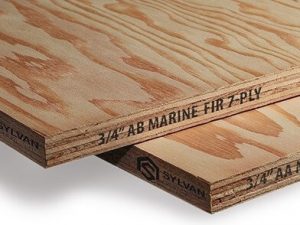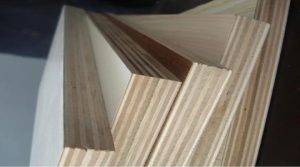Abstract: This paper describes the current situation of particle board industry, existing quality problems, inspection methods and common problems in the process of product quality inspection.
Particle board production began in the late 19th century, is the use of small wood, wood processing leftovers (slab, cut, shavings, wood chips, sawdust, etc.), harvesting leftovers and other plant materials processed into a certain specification and form of scrap or shavings, A wood-based board formed by applying a certain adhesive after paving and forming under the action of heat and pressure.
China’s particle board production enterprises are mainly concentrated in areas with relatively rich raw material resources, mainly in Fujian, Guangxi, Henan, Guangdong and Jilin provinces and regions. China’s particle board products are widely used, mainly used in furniture manufacturing, construction industry and train, car compartment manufacturing, in the building decoration is mainly used as partition wall, indoor wall decoration board. When used, it is usually necessary to cover the surface of particle board with a plastic veneer. The particle board without veneer is mostly used for the base board of the wallboard, etc, which only plays a supporting role. Due to the extremely poor strength of particle board, it is generally not suitable for the production of larger or more powerful components.
In recent years, with the improve the quality of life, the decoration industry has developed rapidly, and particle board products are more and more inseparable from people’s lives. With the continuous maturity and improvement of technology and the continuous improvement of production equipment, the quality of particle board products in China is also constantly improving, but in recent years, the product quality of particle board is still not optimistic.
1.Current situation and production capacity distribution of particle board industry in China
After the reform and opening up, with the continuous introduction of panel furniture production lines, China’s particle board industry ushered in unprecedented development opportunities. Particle board, as one of the three major wood-based boards, has developed rapidly in China’s wood-based board industry since the new century. In 2006, China ranked first in the production of particle board in the world. In 2008, the production of particle board in China exceeded 10 million m3. In 2011, the production reached a historical high of 25.59 million m3. In 2016, the output reached 26.5 million m3, refreshing the production record of particle board in China, of which 25.72 million m3 of wood particle board and 780,000 m3 of non-wood particle board.
According to the Chinese particle board industry survey conducted by the particle board Professional Committee of China National Forest Product Industry Association in June 2017, China’s particle board production lines are mainly distributed in 23 provinces (autonomous regions) such as Shandong, Guangdong, Henan, Jiangsu and Hebei. By the end of 2016, there were 6 provinces (regions) with production capacity of more than 1 million m3/ year, respectively Guangdong, Hebei, Shandong, Henan, Guangxi and Fujian Province (region), of which Guangdong, Hebei and Shandong Province exceeded or approached 2 million m3/ year. There are 6 provinces (regions) with particle board production capacity of 500,000-990,000 m3/ year, and 10 provinces (regions) with particle board production capacity of less than 500,000 m3/ year.
2.Quality problems of particle board in China
With the wide application of particle board in people’s lives, its quality has been paid more and more attention. Although the development momentum of China’s particle board industry is very good, the quality of particle board is uneven. We often see reports in magazines or newspapers about particle board inspection failures. For example, the AQSIQ announced the results of the 4th batch of particle board product quality supervision in 2016, a total of 70 batches of particle board products produced by 70 enterprises in Hebei, Liaoning, Jiangsu, Fujian, Jiangxi, Henan, Guangdong, Guangxi, Sichuan and other 9 provinces, autonomous regions, municipalities directly under the central government, 70 batches of particleboard products, 8 batches of products do not meet the standards. Among them, the water absorption thickness expansion rate of 4 batches of products is unqualified, the static bending strength of 4 batches of products is unqualified, and the internal bonding strength of 2 batches of products is unqualified. Shandong Provincial Bureau of Quality and Technical Supervision official website reported: In the fourth quarter of 2017, Shandong Provincial Bureau of Quality and technical supervision organized and carried out sampling inspections of particleboard product quality. This time, a total of 8 batches of particleboard products produced by 8 enterprises in the province were checked, and 2 batches of products of 2 enterprises did not meet the requirements of relevant standards, and the unqualified items all involved 2h water absorption thickness expansion rate. These reports show that there are still many problems in the quality of particleboard in our country, and it still needs to be improved.
3.Particle board quality inspection method
Particle board quality testing is mainly the detection of physical and mechanical properties, such as water absorption thickness expansion rate, static bending strength and elastic modulus, surface bonding strength, internal bonding strength, formaldehyde release, etc. All testing methods are tested in accordance with GB/T4897-2015 “particle board”, GB/T17657-2013 “Test method for physical and chemical properties of wood-based panels and decorative wood-based panels”, and GB18580-2017 “Formaldehyde emission Limits in wood-based panels and their products of Interior decoration materials”.
4.Reasons affecting the quality of particle board
The most important reason affecting the quality of particle board is the demand of the market. First of all, due to the market demand for low-grade particle board products, coupled with insufficient supervision, some unqualified products of small enterprises have entered the market. Secondly, due to the rise in raw material prices, the production cost of enterprises has increased significantly, resulting in some small enterprises in order to reduce costs and not fully implement national standards, unqualified projects have different reasons.
4.1 The expansion rate of water absorption thickness is high
The water absorption thickness expansion rate is a very important indicator in the actual use of particle board, which reflects the water resistance and dimensional stability of the product, the higher the value, the worse the water resistance. If the board with poor water resistance is not tightly sealed around it in a humid environment, there may be significant expansion, causing changes in size and strength, which in turn affects the use of particle board products. The main factors affecting the water absorption thickness expansion rate of the sheet are the selection of raw materials, the quality of the adhesive, the amount of sizing, the hot pressing process and the density and water content of the product.
4.2 Static bending strength and elastic modulus are low
Static bending strength and elastic modulus are important indicators of particle board, which represent the maximum ability of particle board to resist external force without being damaged and the stiffness performance indicators, indicating the ability of particle board products to resist bending damage and external deformation. Failure of these two indicators indicates that the product does not have sufficient bending strength and will produce large deformation after bending action. It will affect the use of particle board products, especially the performance of load-bearing parts. The main factors affecting the static bending strength and elastic modulus of particle board are: the structure of the slab, the shape of the coarse shavings in the core layer, the density of the board, the atomization degree of the spray glue, the water content of the surface layer and the water content of the core layer, etc. In addition, the tree species and the thickness of the board have an impact on the static bending strength and elastic modulus of the packaging.
4.3 The inner bonding strength is not up to standard
The internal bonding strength increases directly with the increase of the density of the plate, and under normal circumstances, the failure occurs in the core layer. The results show that the inner bonding strength is closely related to the average density and core density. The higher the density of the core layer, the greater the internal bonding strength. In addition, the amount of sizing, hot pressing time and holding temperature also directly affect the internal bonding strength of particle board.
4.4 Surface bonding strength is not up to standard
The surface bonding strength reflects the processing performance of particle board, and the unqualified particle board products will appear in the use of structural loosening, delamination and decorative surface degumming phenomena. The surface of the plate is rough and the uniformity is poor, so the surface bonding strength is poor, but after sanding, the pre-cured layer on the surface of the plate can be removed, and the smoothness of the surface of the plate can be increased, so as to improve the surface bonding strength.
4.5 Formaldehyde emission exceeds the standard
Formaldehyde is very harmful, mention formaldehyde, people will be associated with cancer, this is not alarmist, research has proved that formaldehyde has a strong carcinogenic and cancer-promoting effect. Formaldehyde is an important factor in inducing leukemia and one of the important causes of many diseases. A large number of literature records, formaldehyde can cause dizziness, headache, vomiting, chest tightness, but also can make people smell abnormalities, allergies, lung function abnormalities, liver function abnormalities, if pregnant women breathe formaldehyde for a long time, easy to cause fetal deformity, premature birth or death. At the same time, it will reduce people’s immunity, especially for children, the elderly and pregnant women. On October 27, 2017, formaldehyde was listed as a Class 1 carcinogen in the carcinogenic list published by the World Health Organization’s International Agency for Research on Cancer.
There are three main reasons for the excessive formaldehyde release: first, the use of poor quality adhesives; Secondly, unreasonable sizing process and hot pressing process are adopted. Third, the proper post-treatment process was not adopted.
5 Conclusion
Particle board enterprises in order to be invincible, we must quickly improve the quality of products and reduce costs, establish brand awareness, and actively participate in market competition, enterprises to increase scientific and technological innovation, step up the production process, improve the technical level, enhance environmental awareness, research and development and use of environmental protection adhesives, away from formaldehyde pollution; In addition, we should pay attention to the training of talents, and pay attention to the later training while introducing excellent management talents and technical talents; Finally, the regulatory authorities will be good, to prevent unqualified products into the market, the state issued preferential policies to encourage the development of strong particle board enterprises, for the development of particle board industry to provide a good environment.


